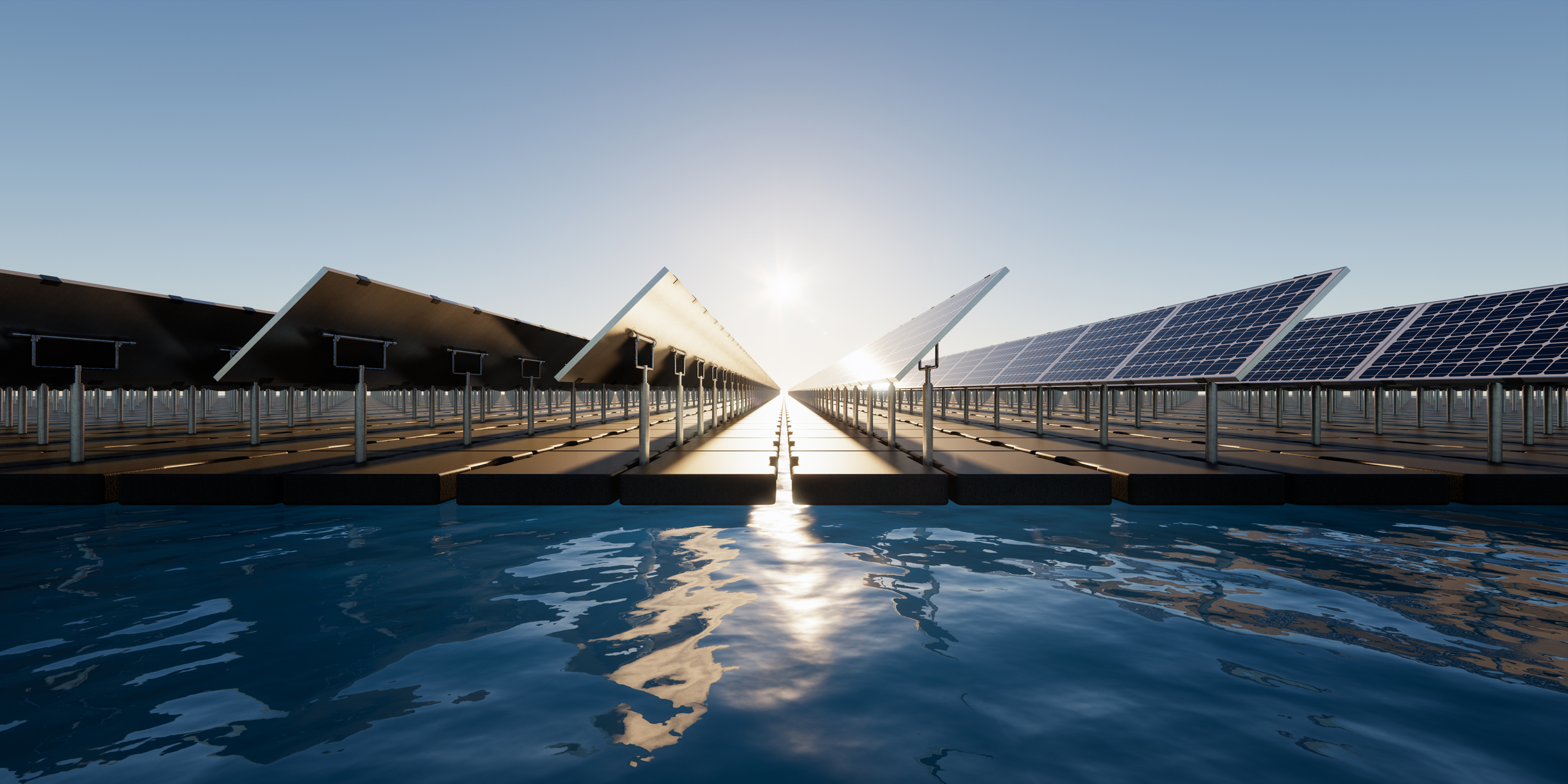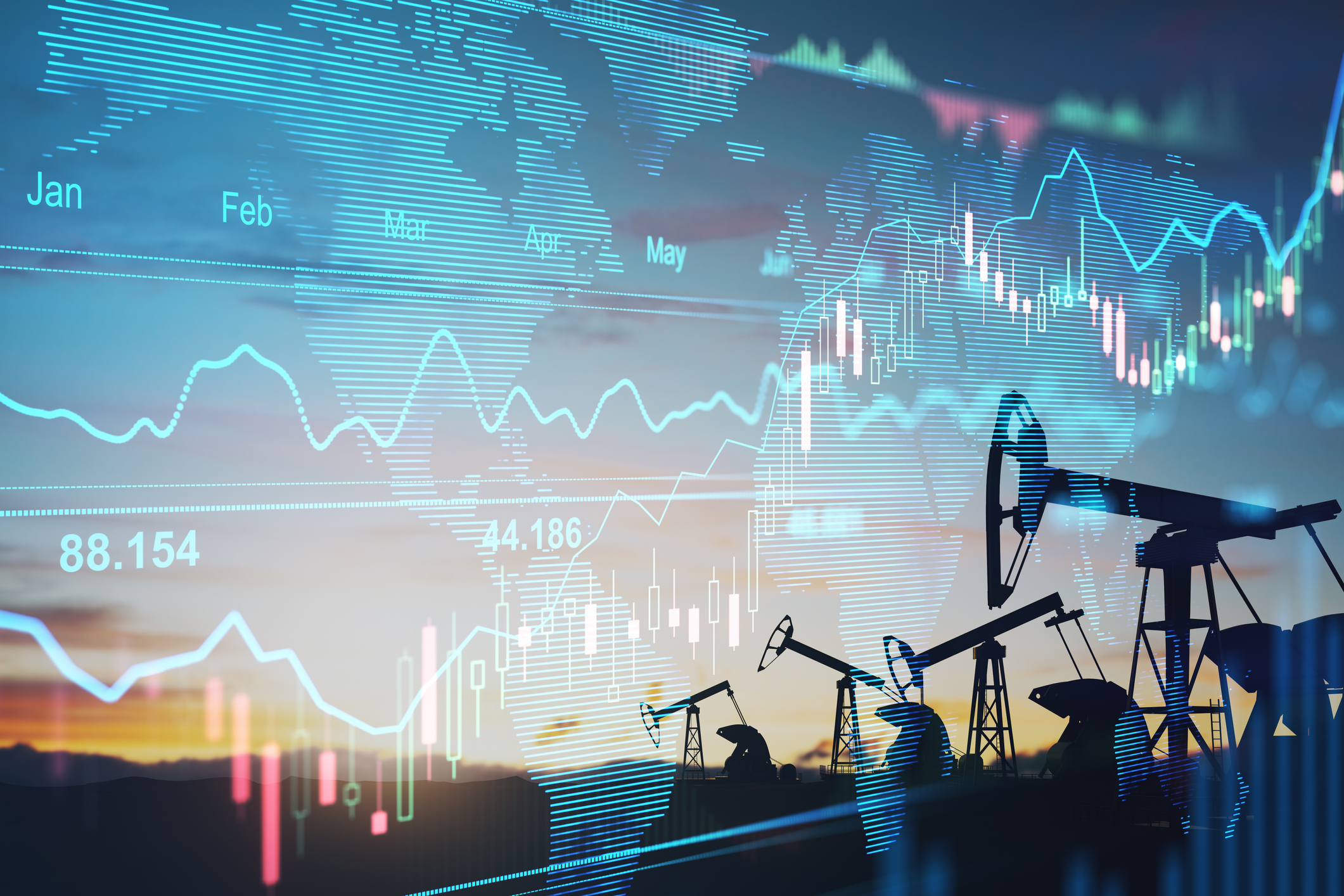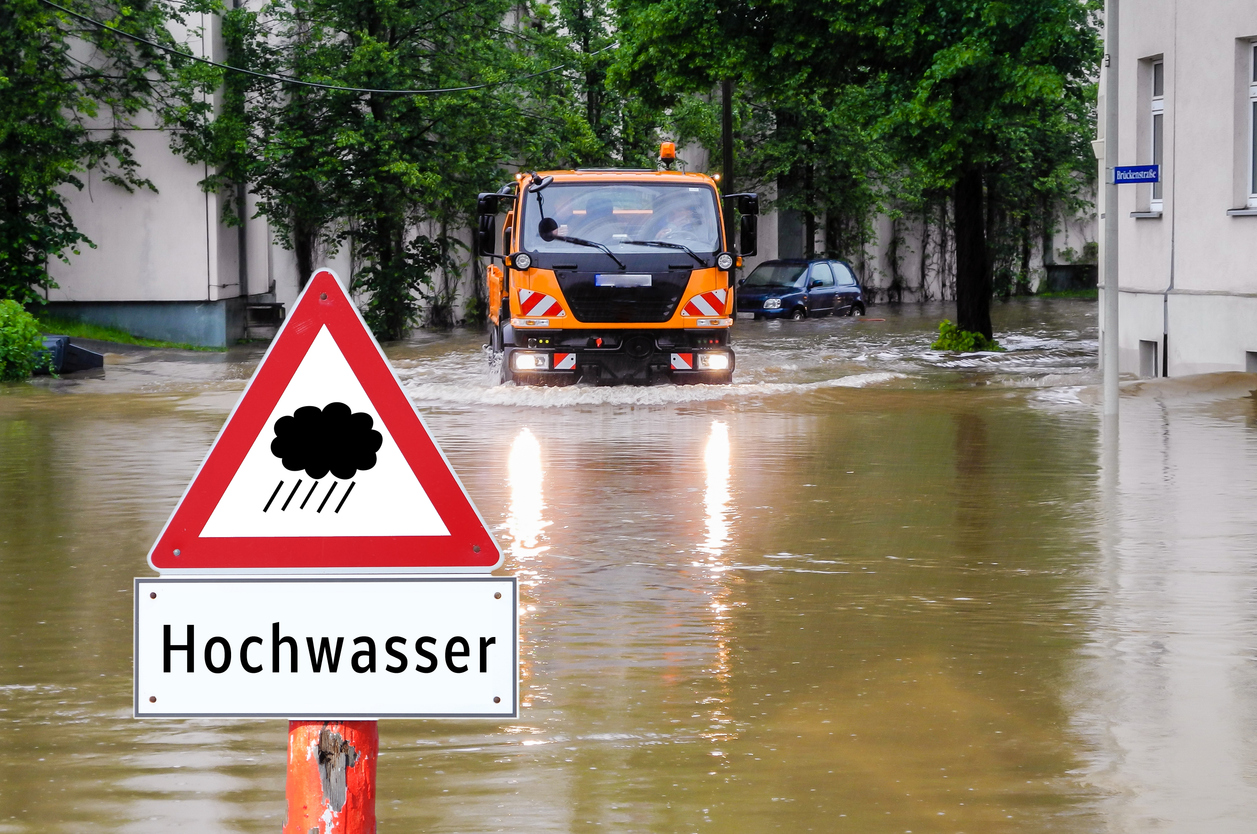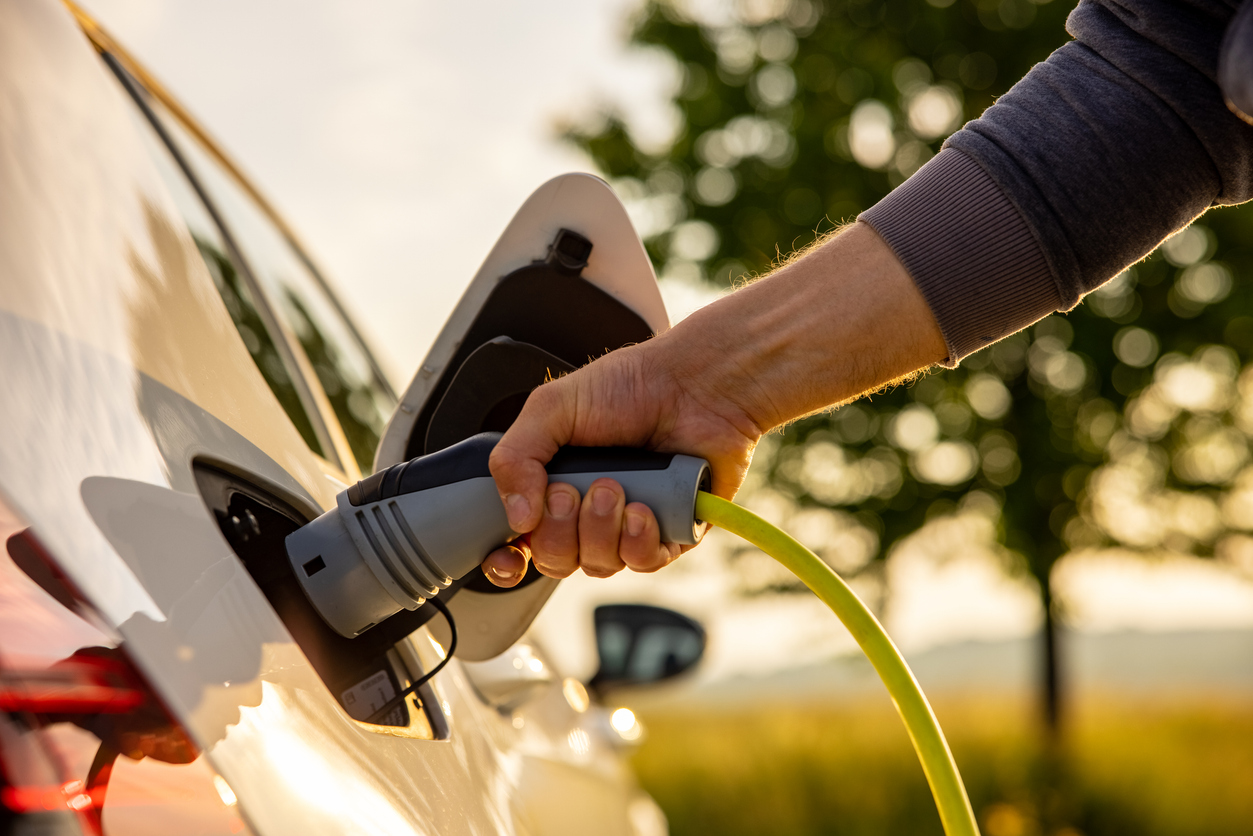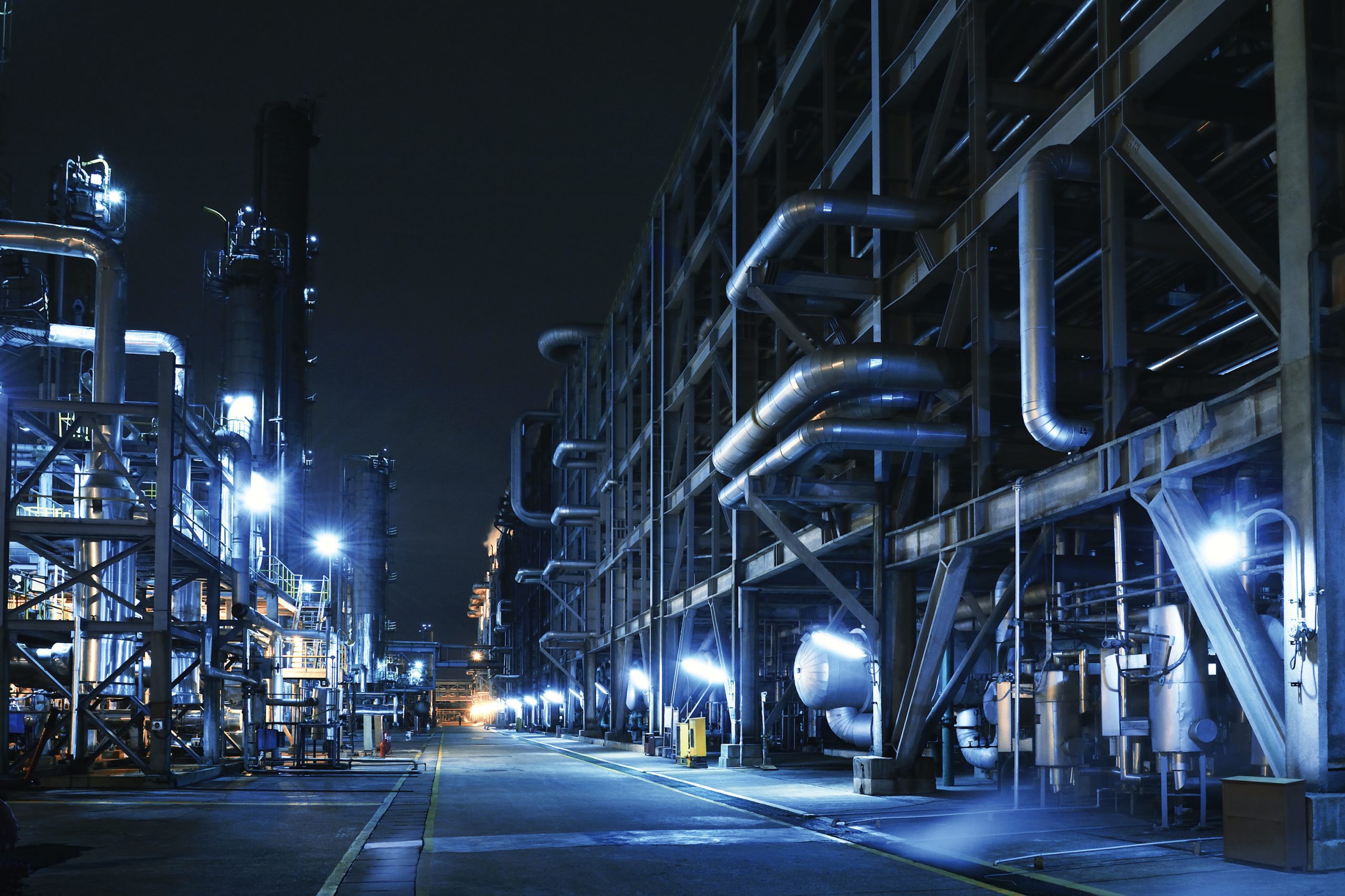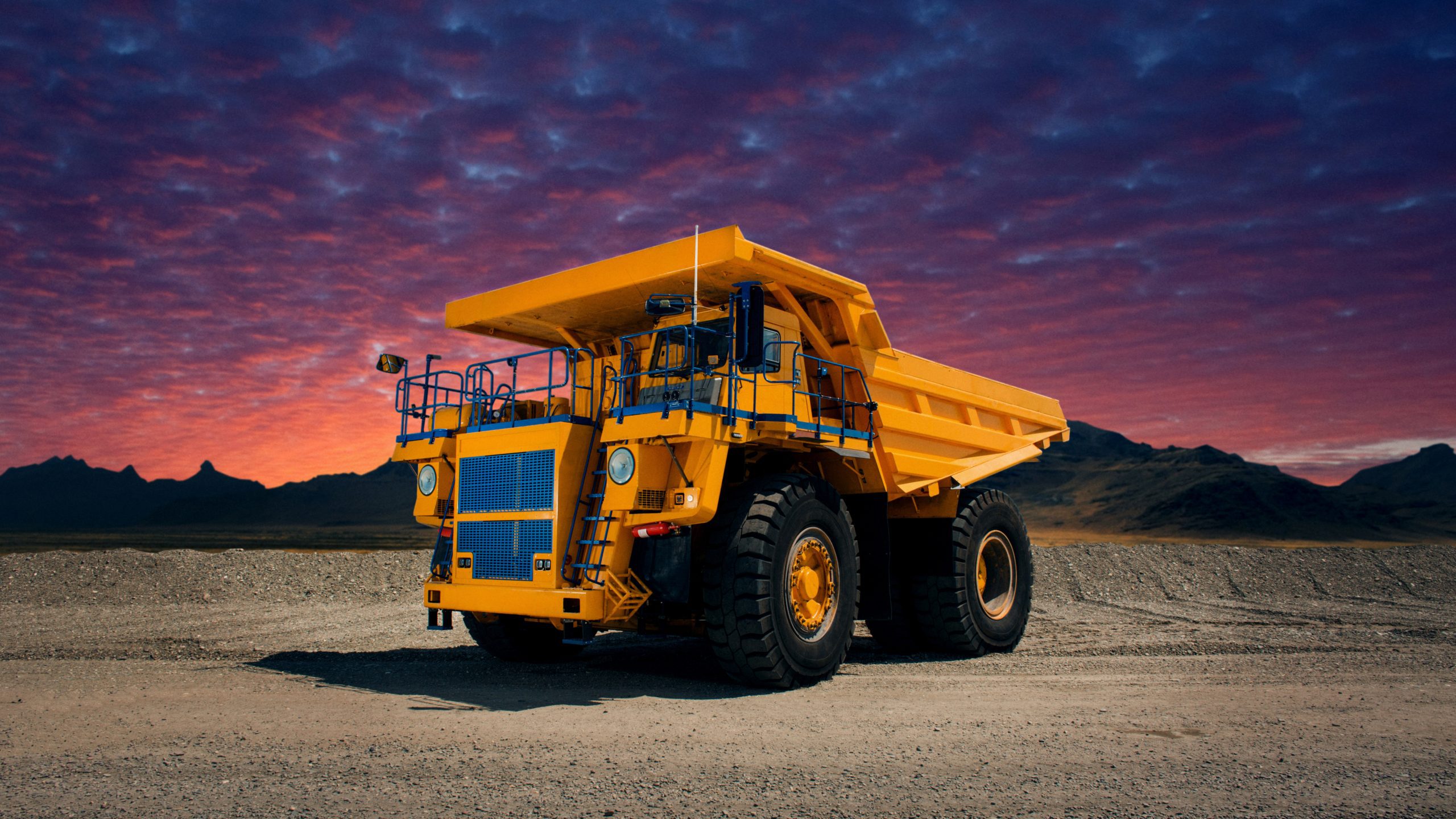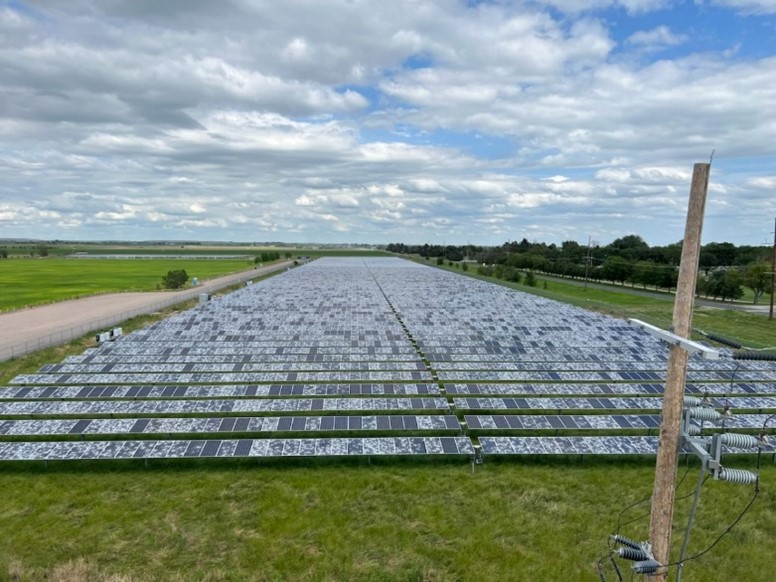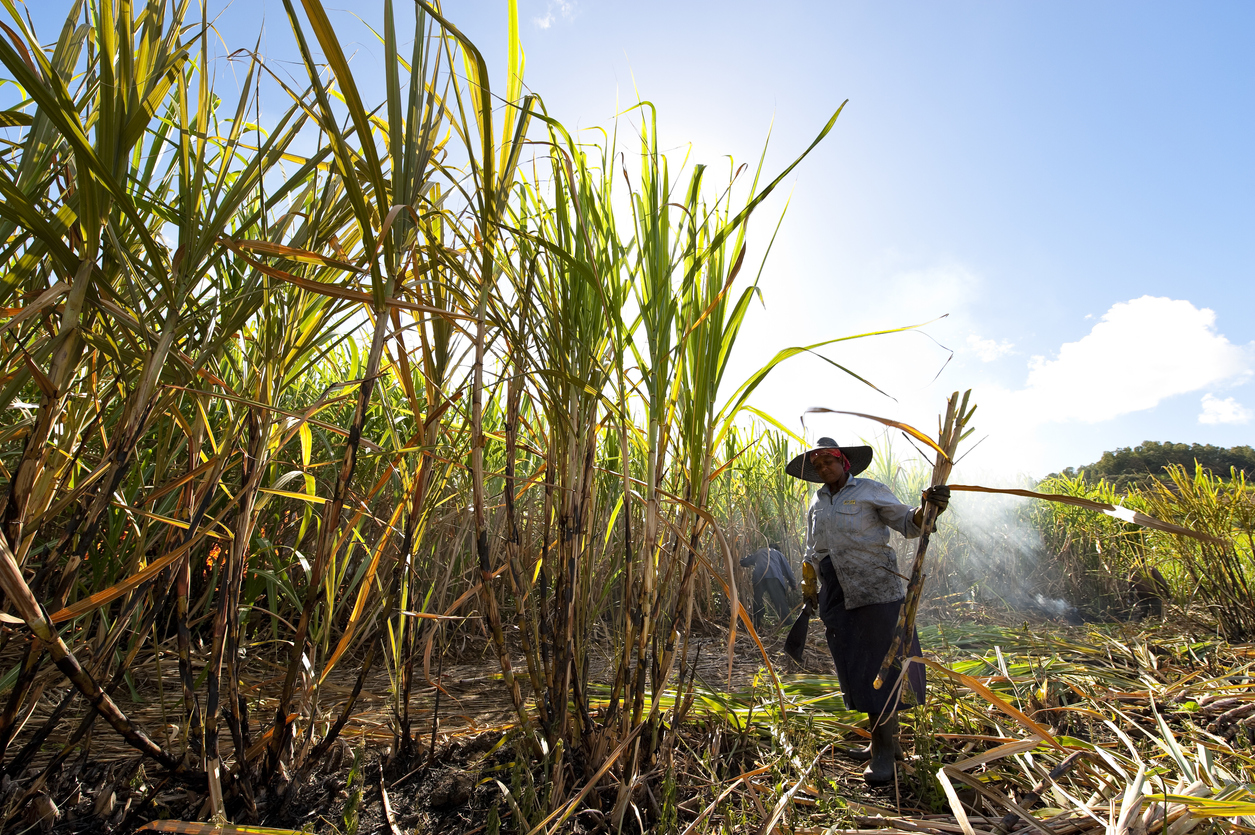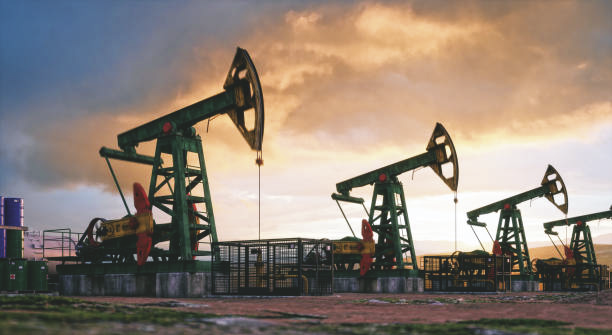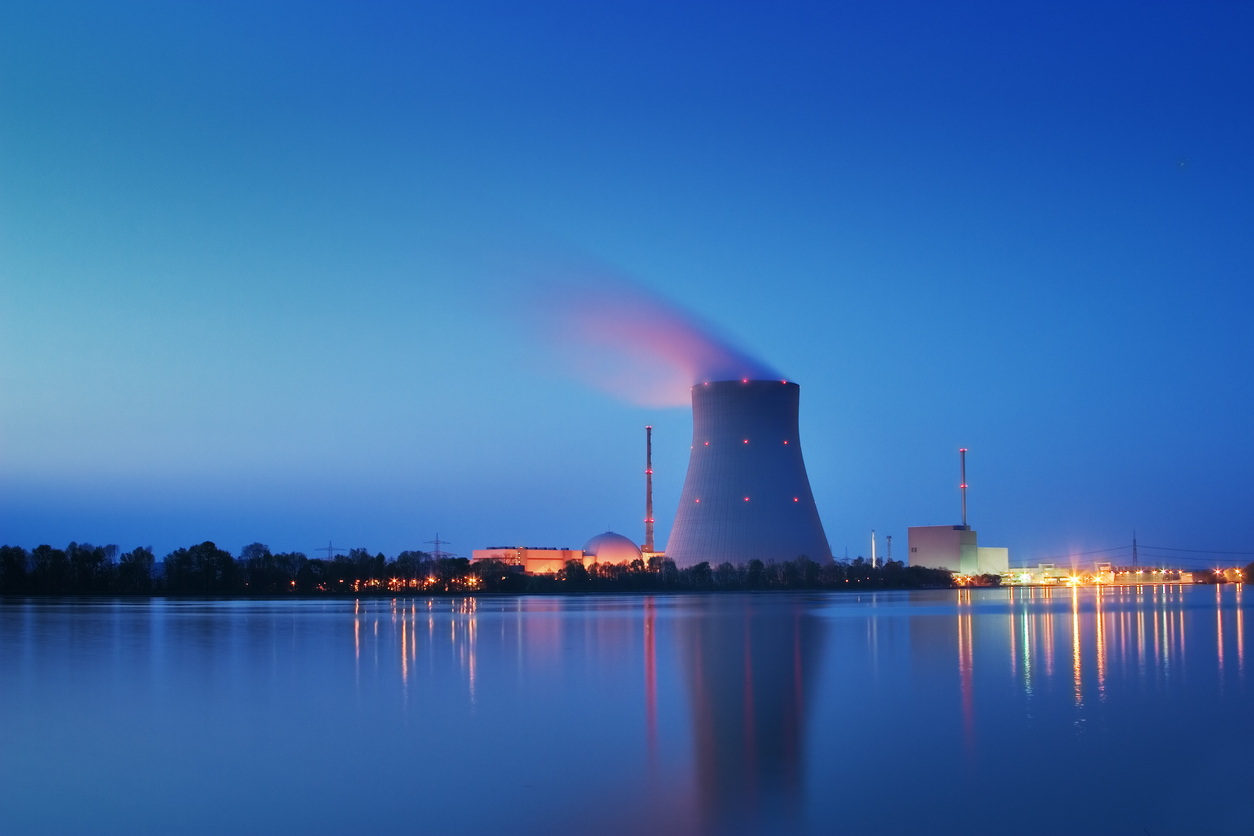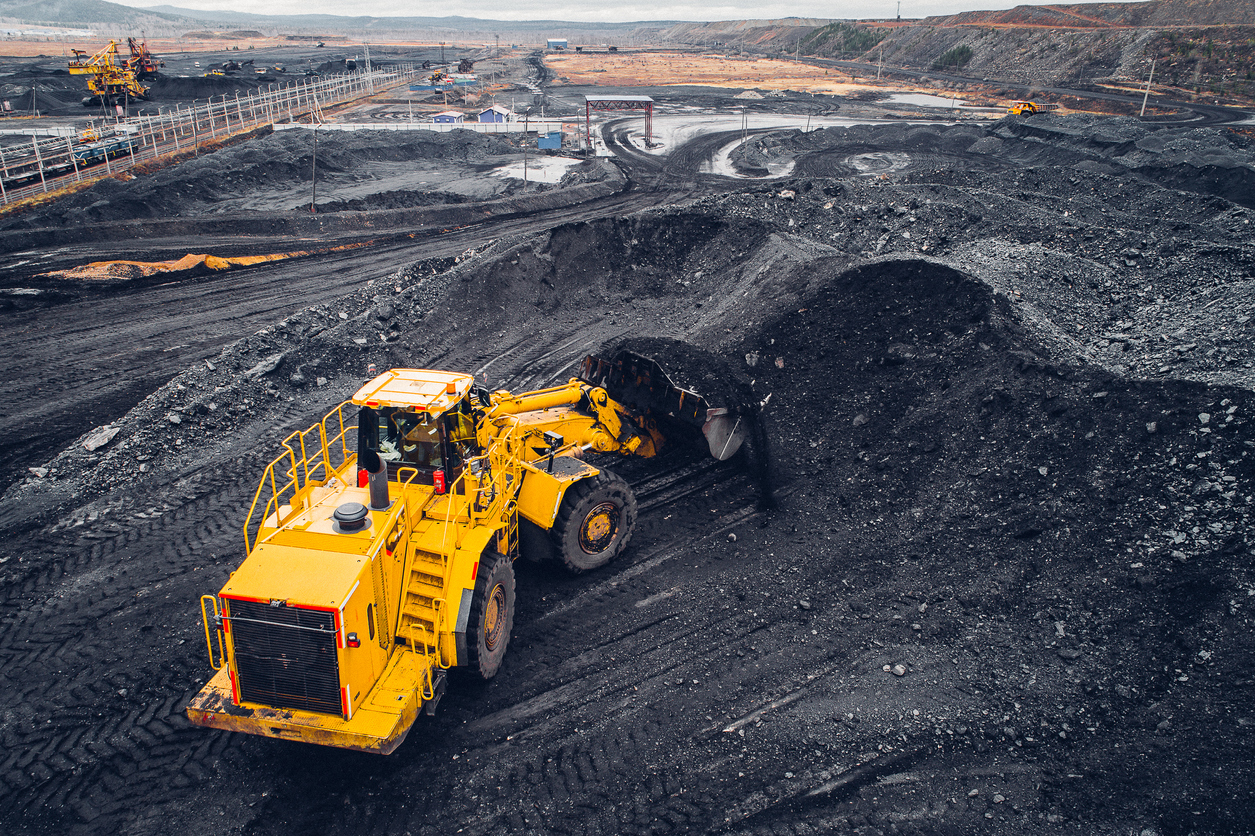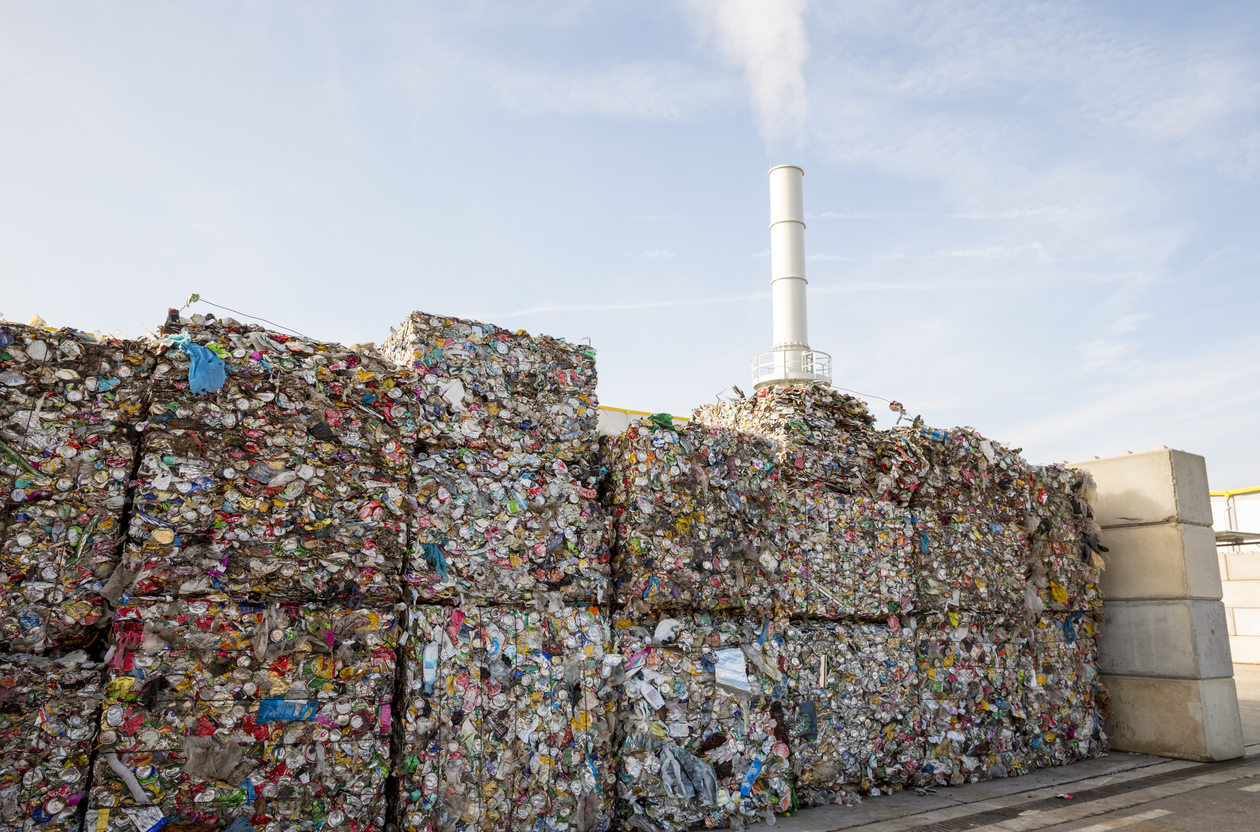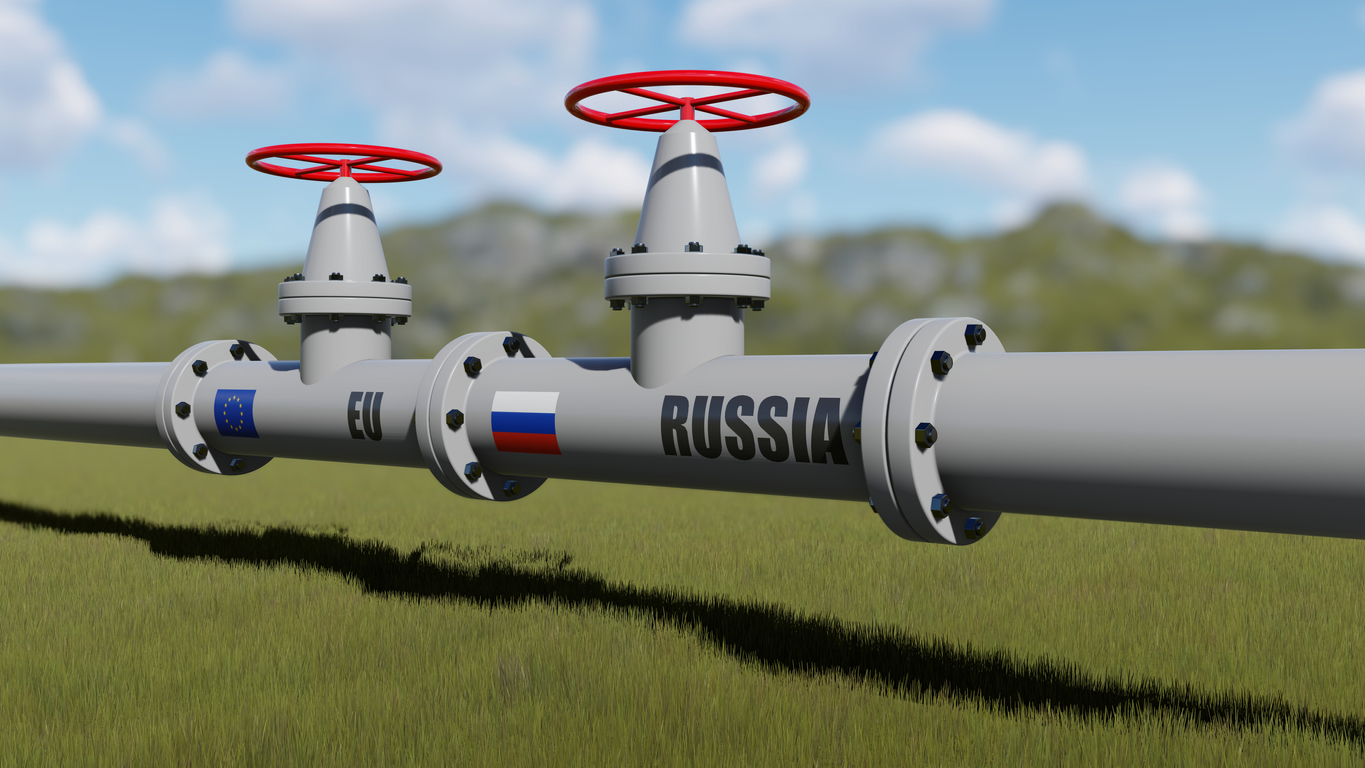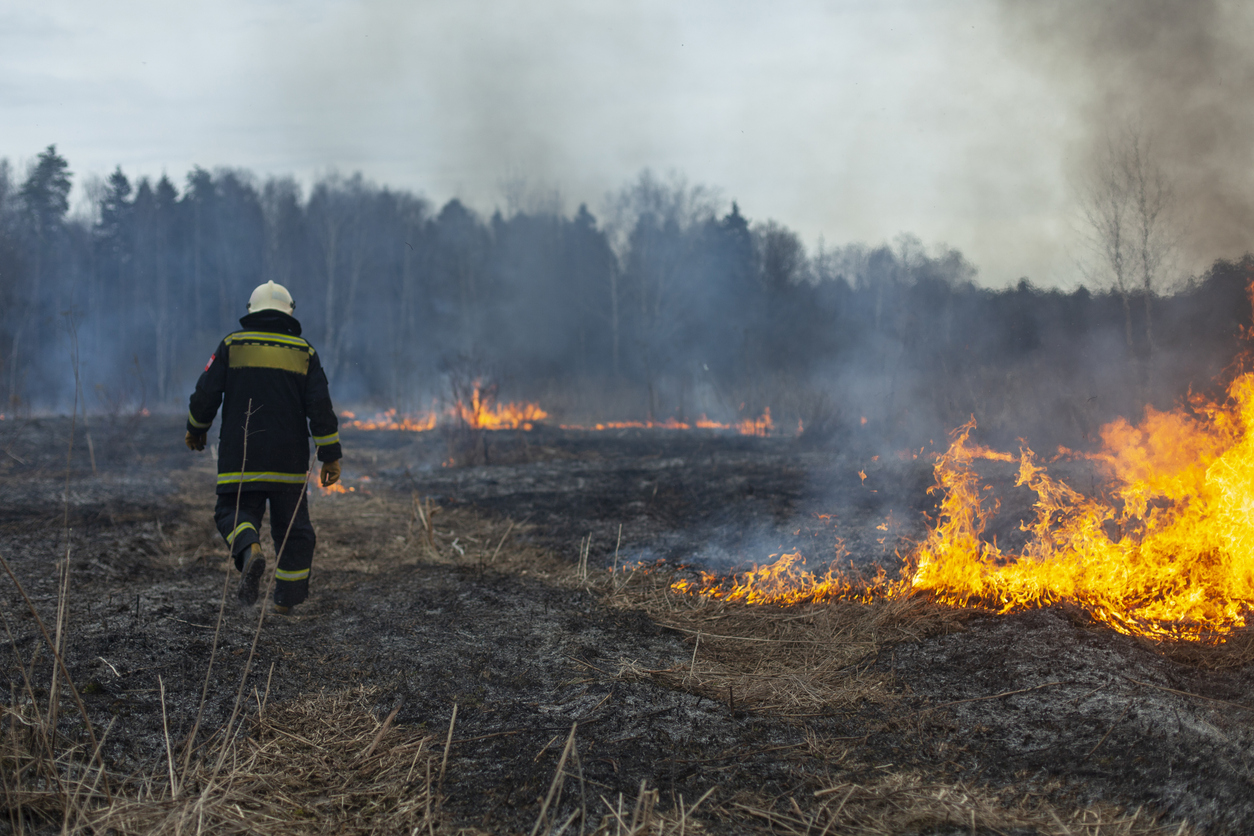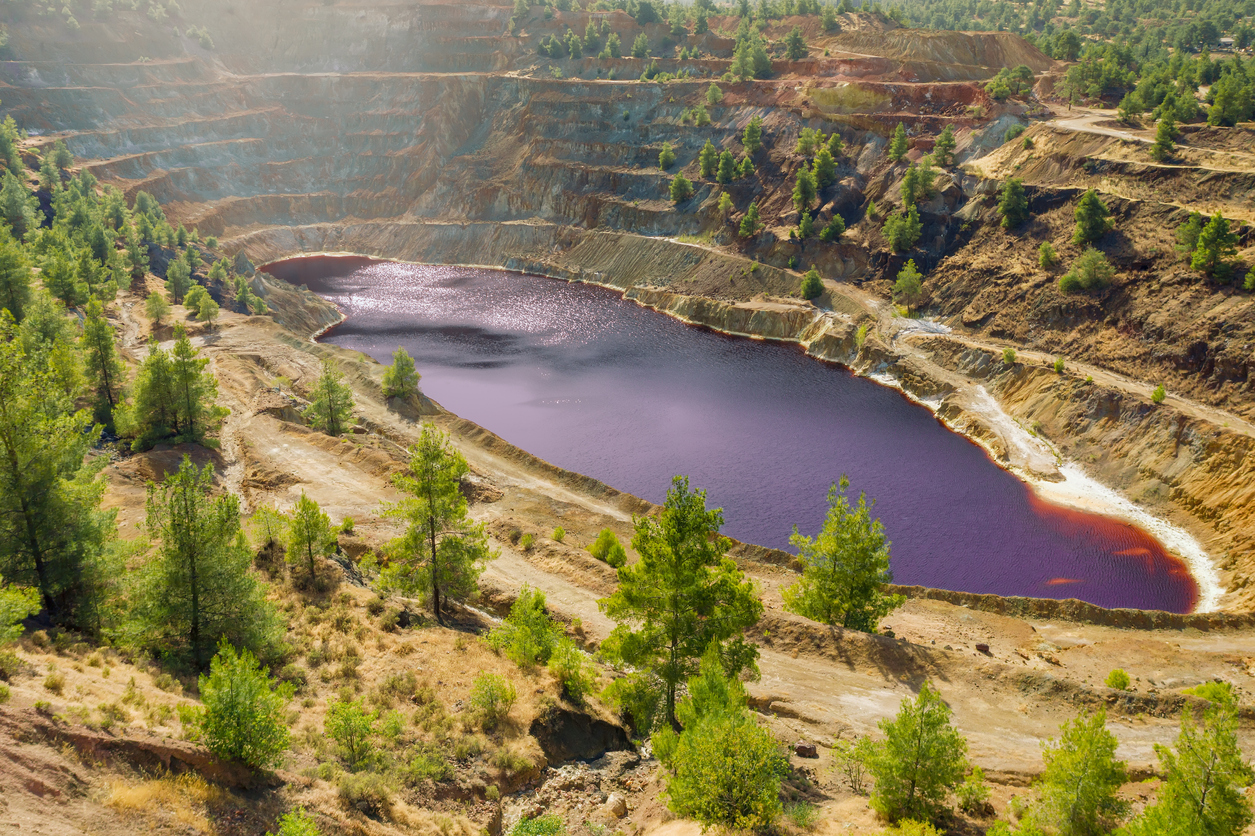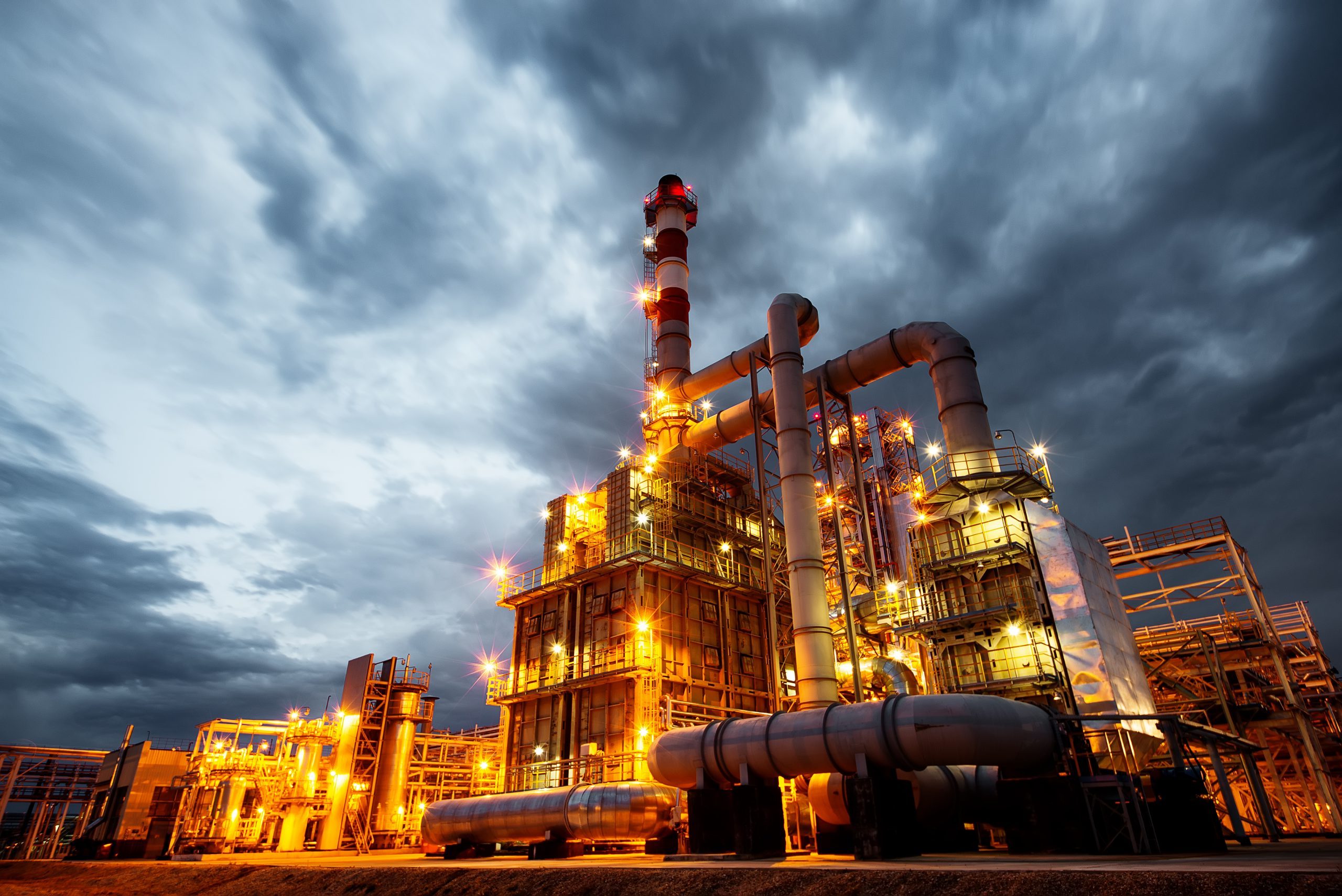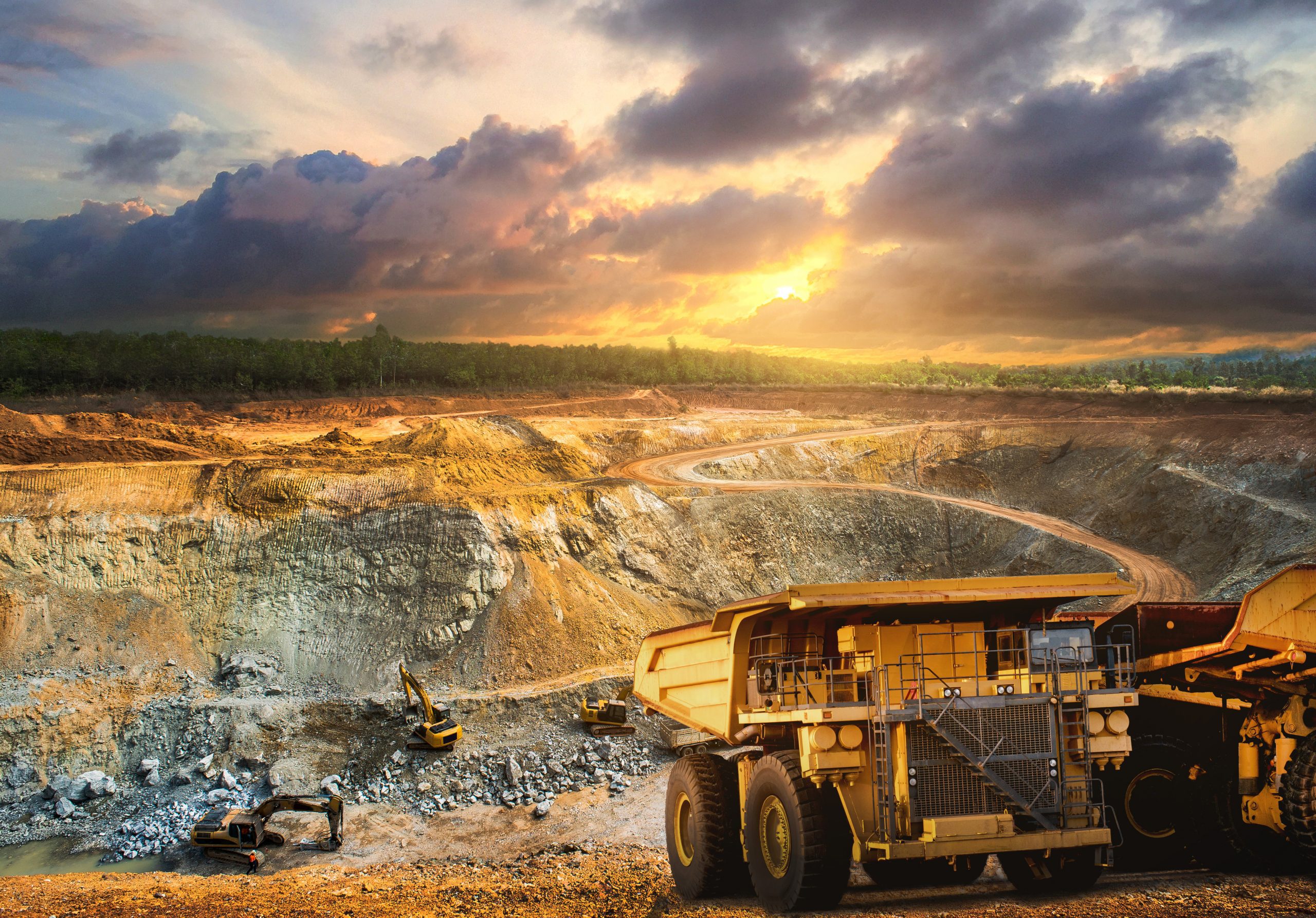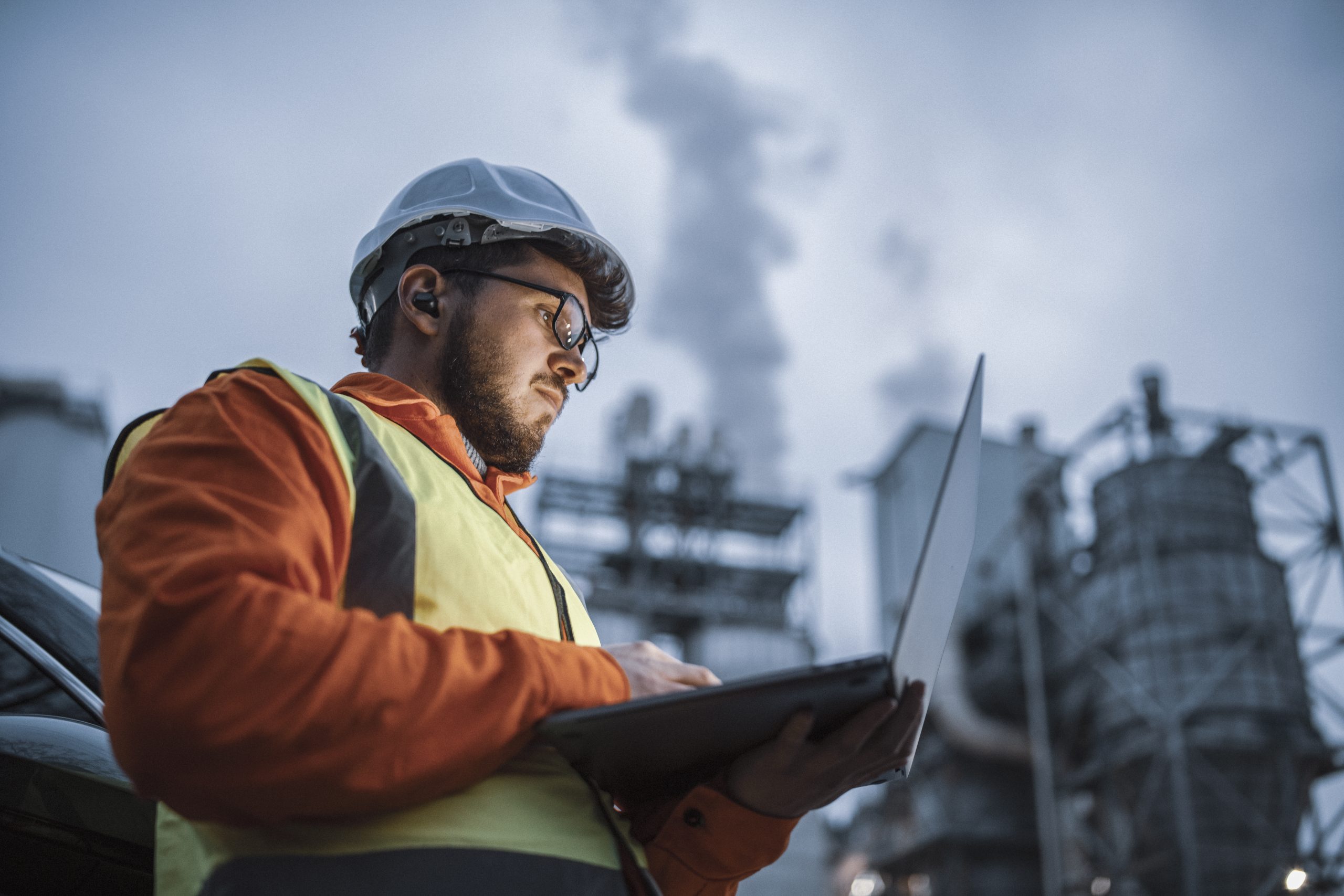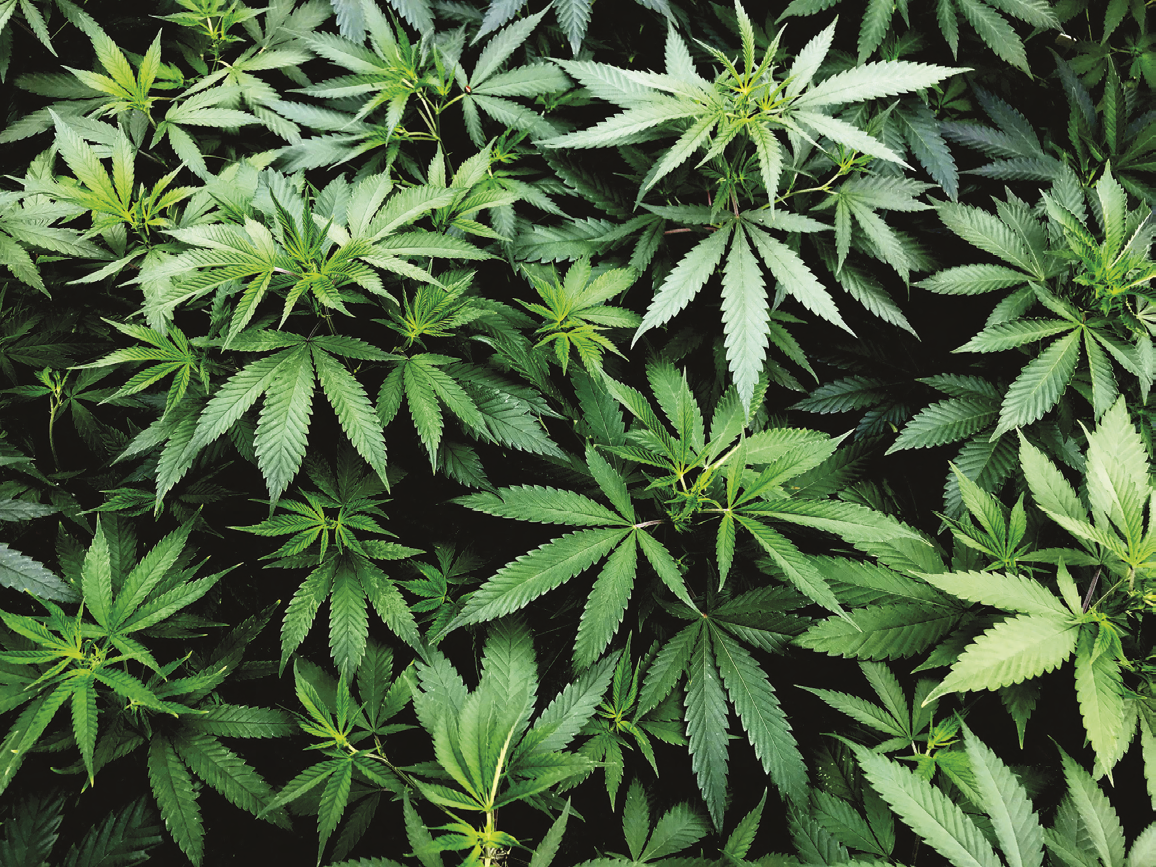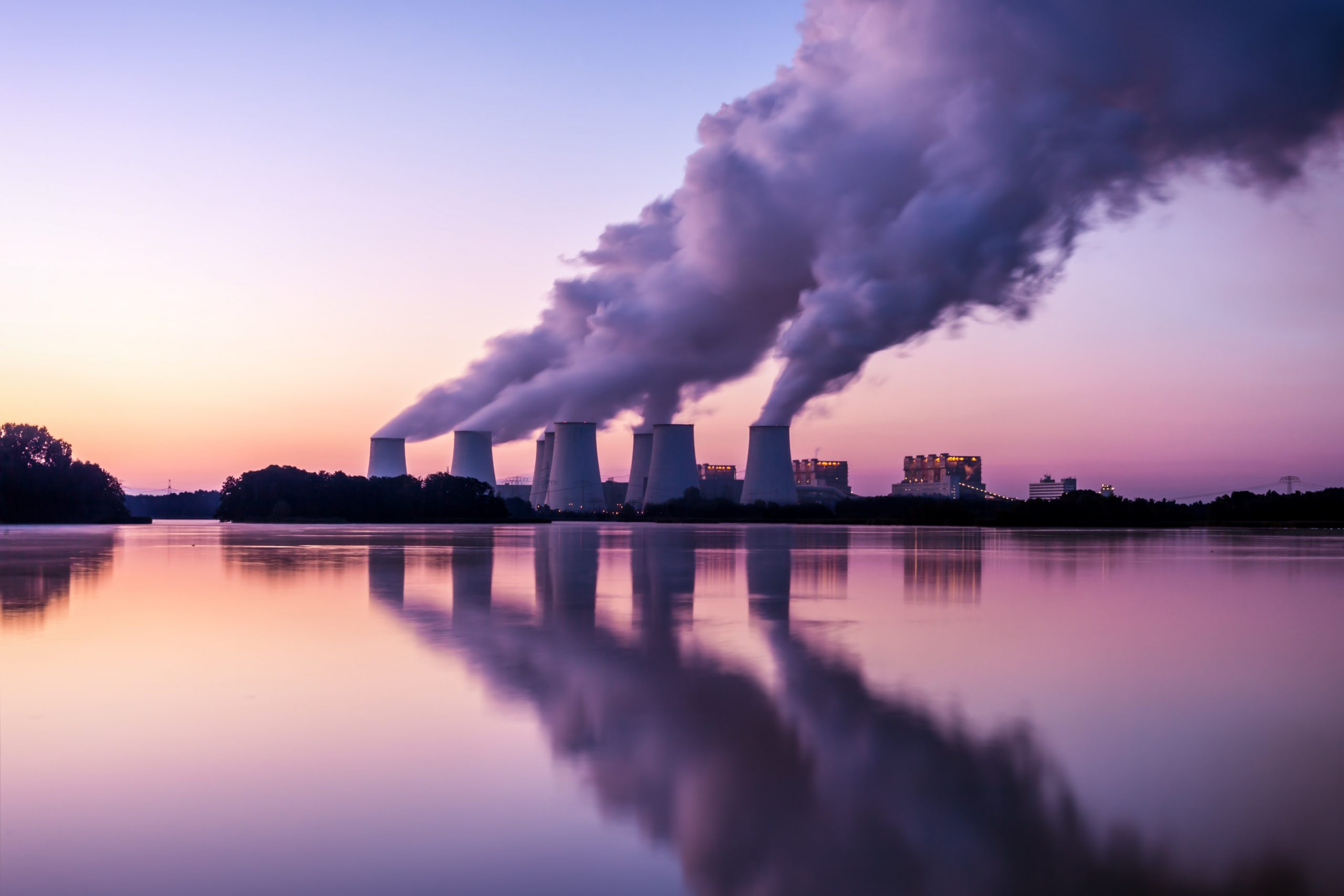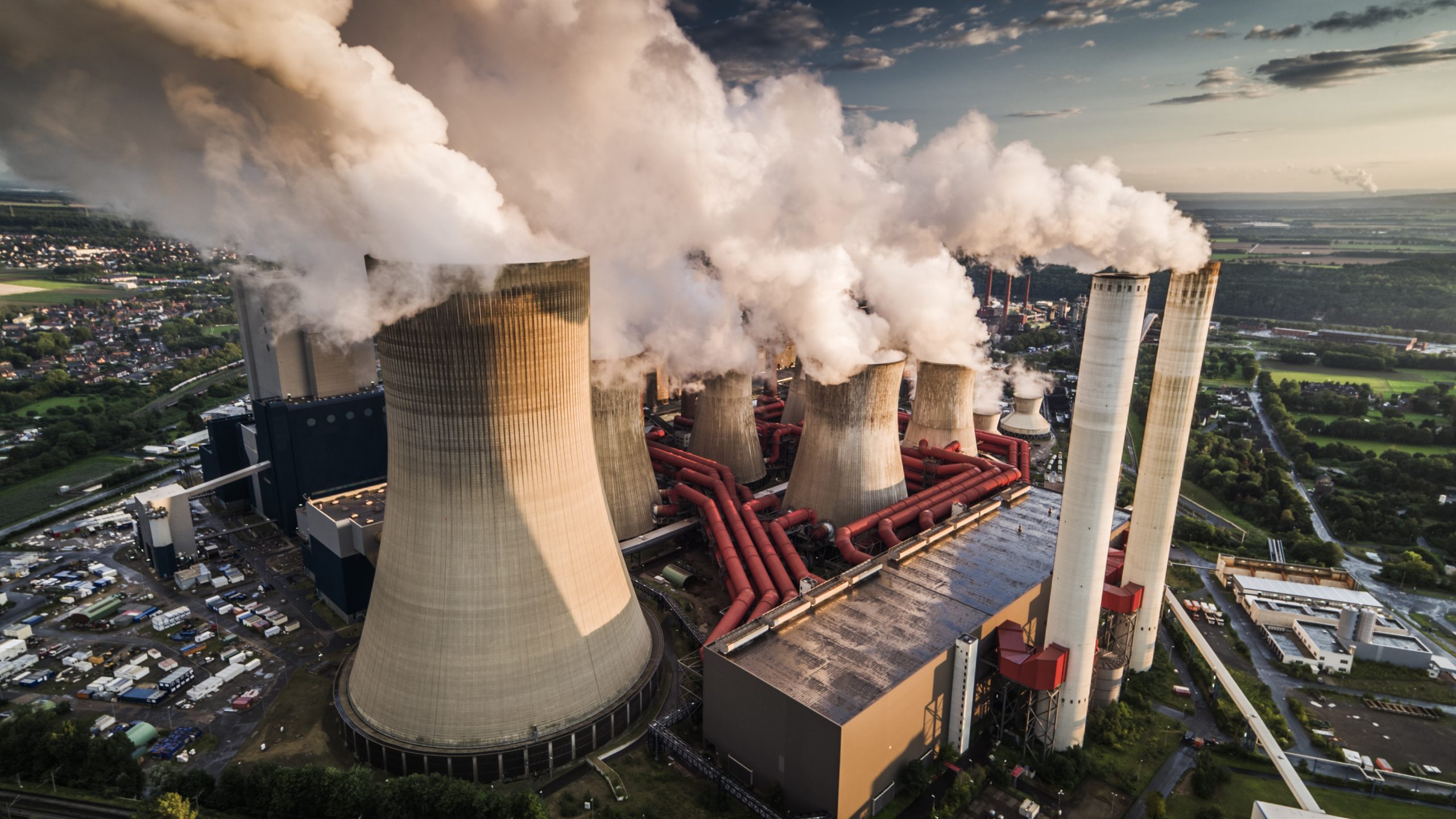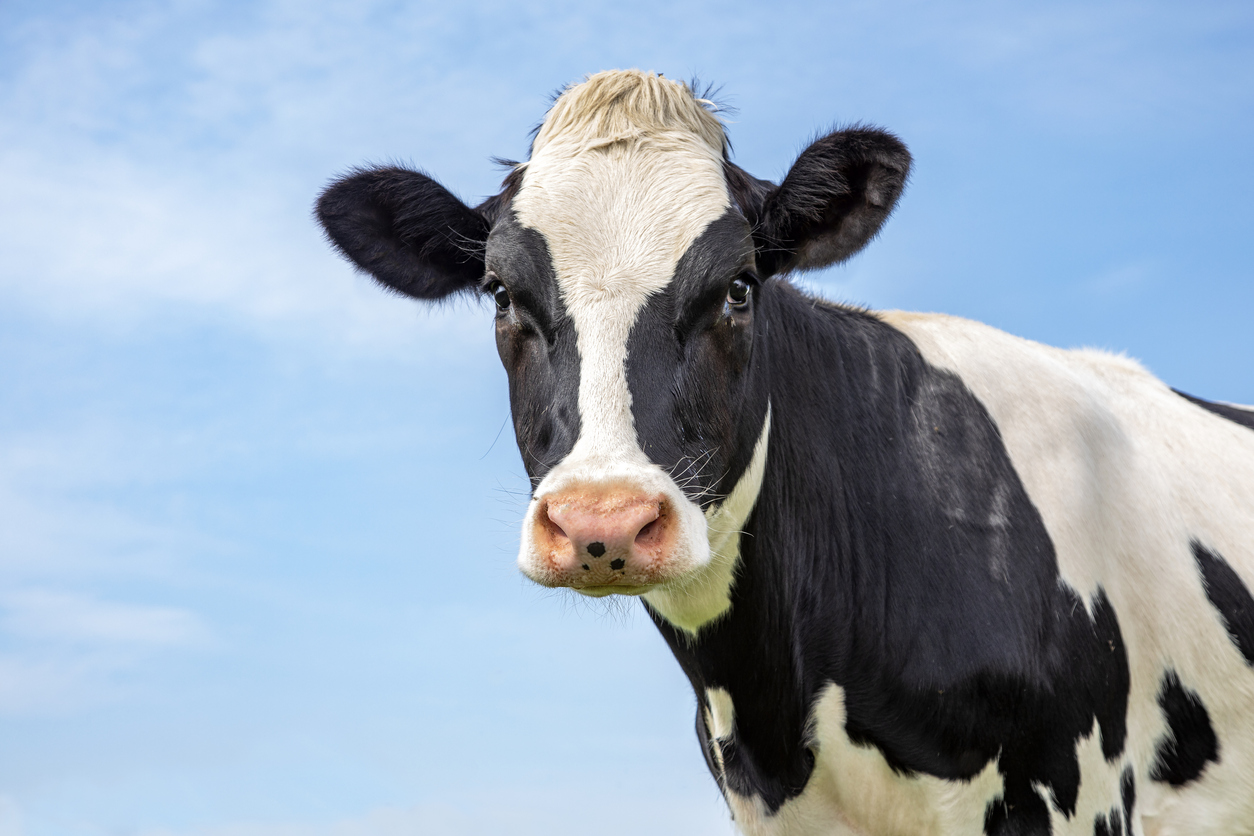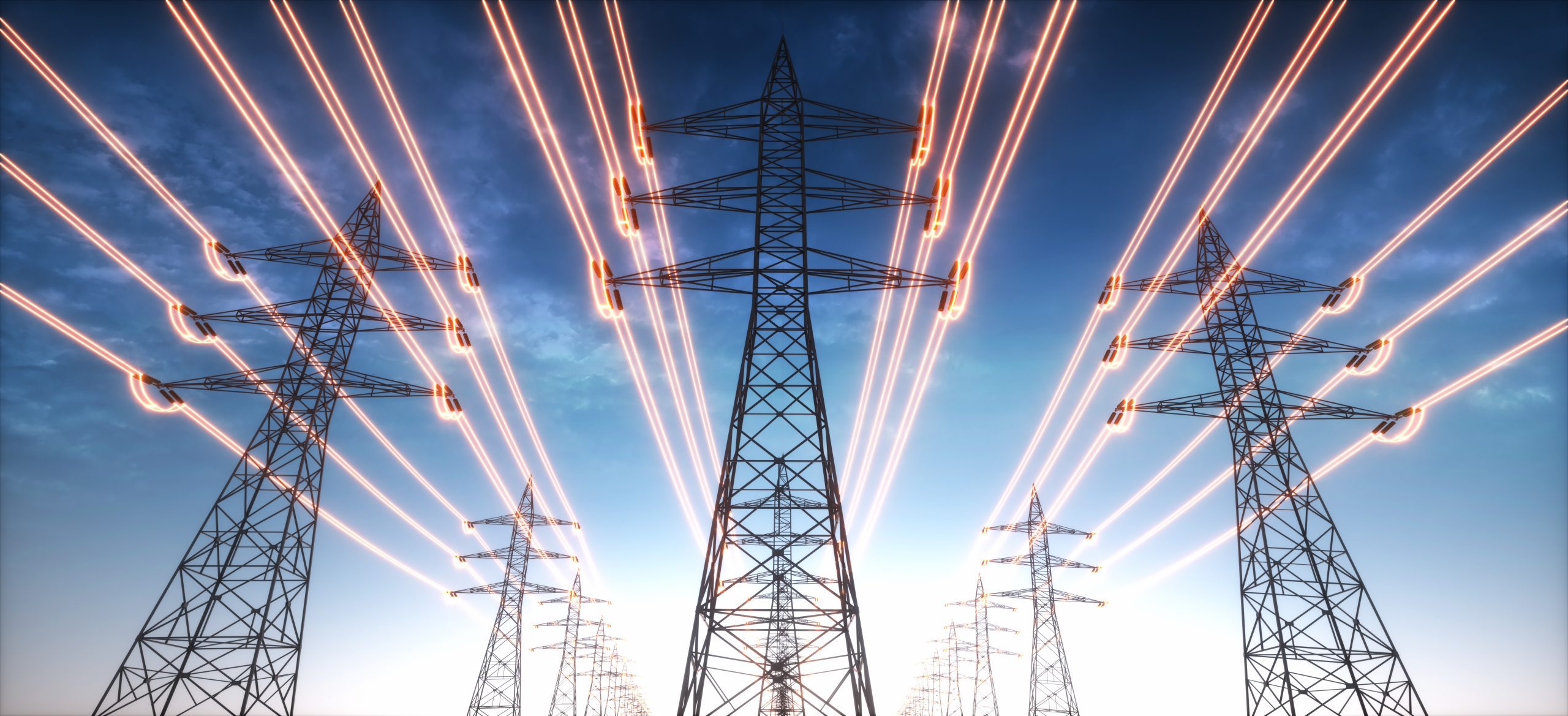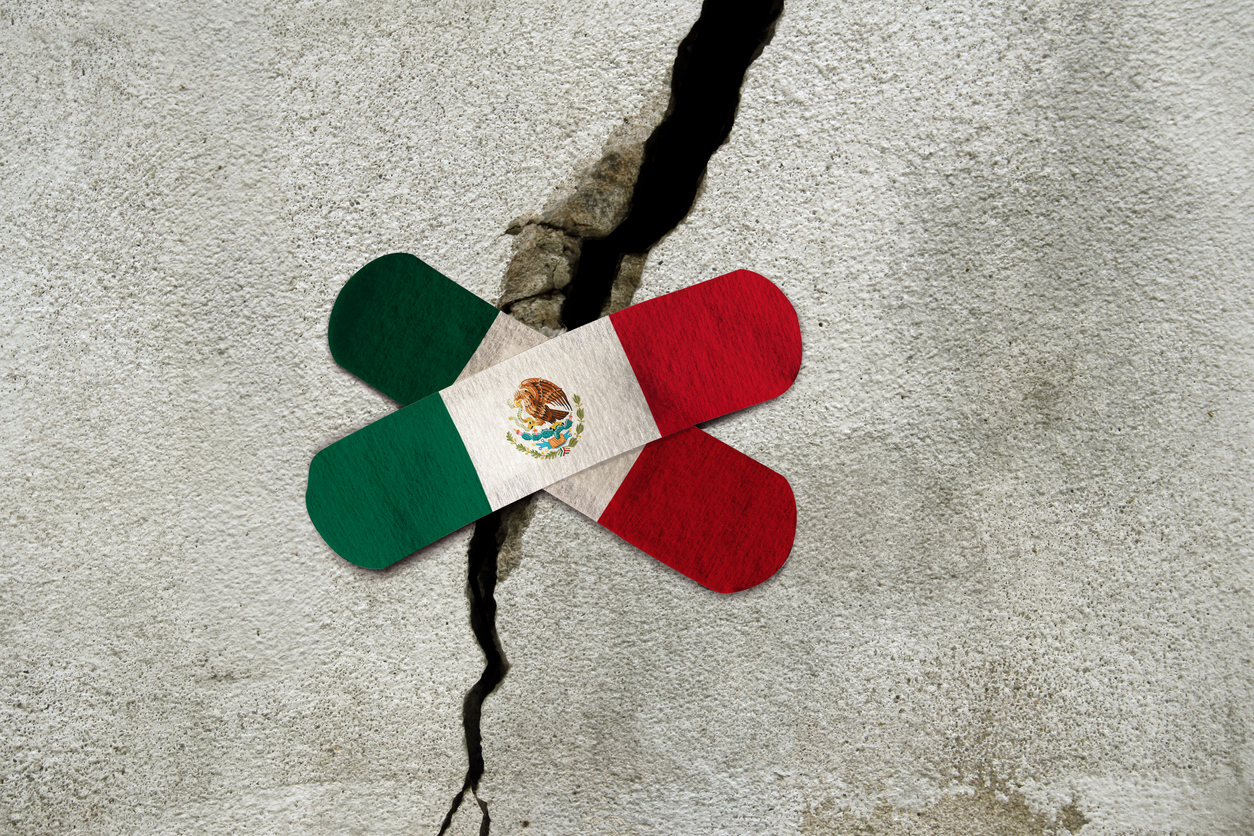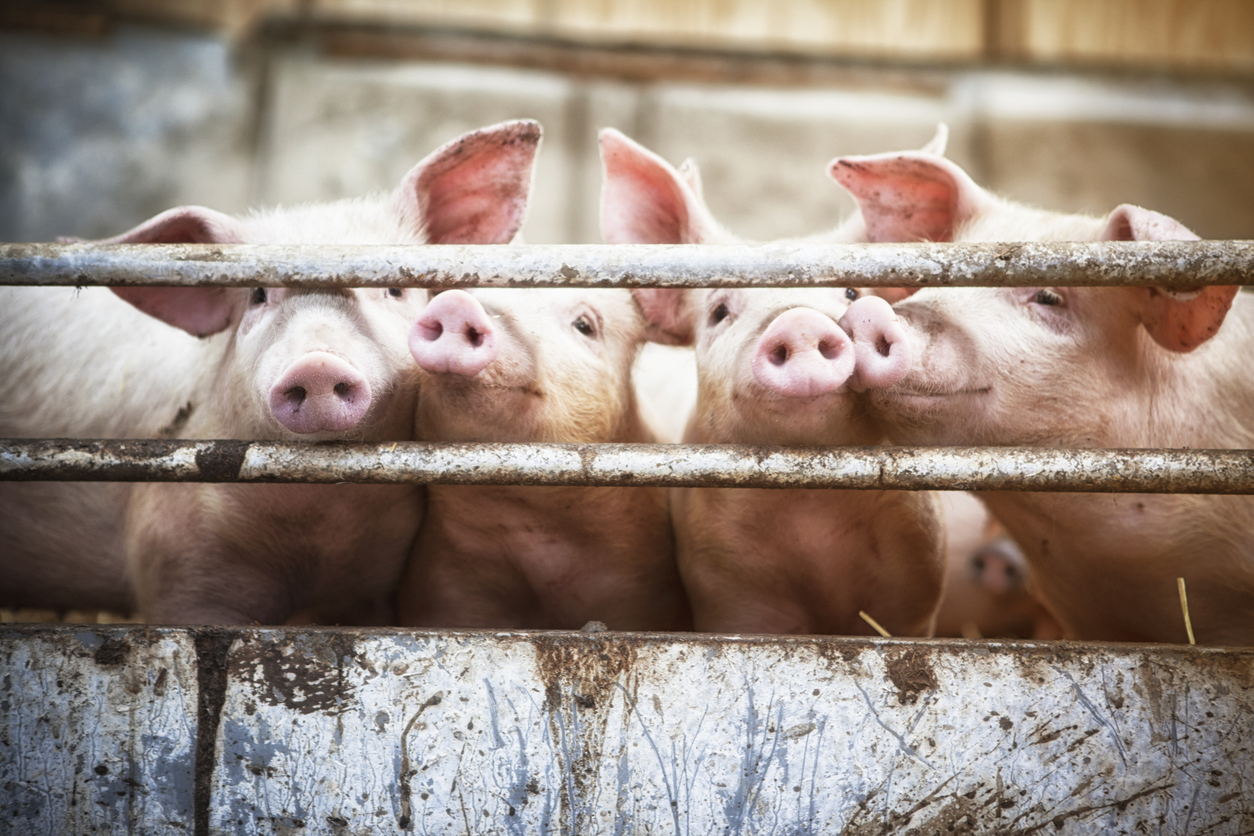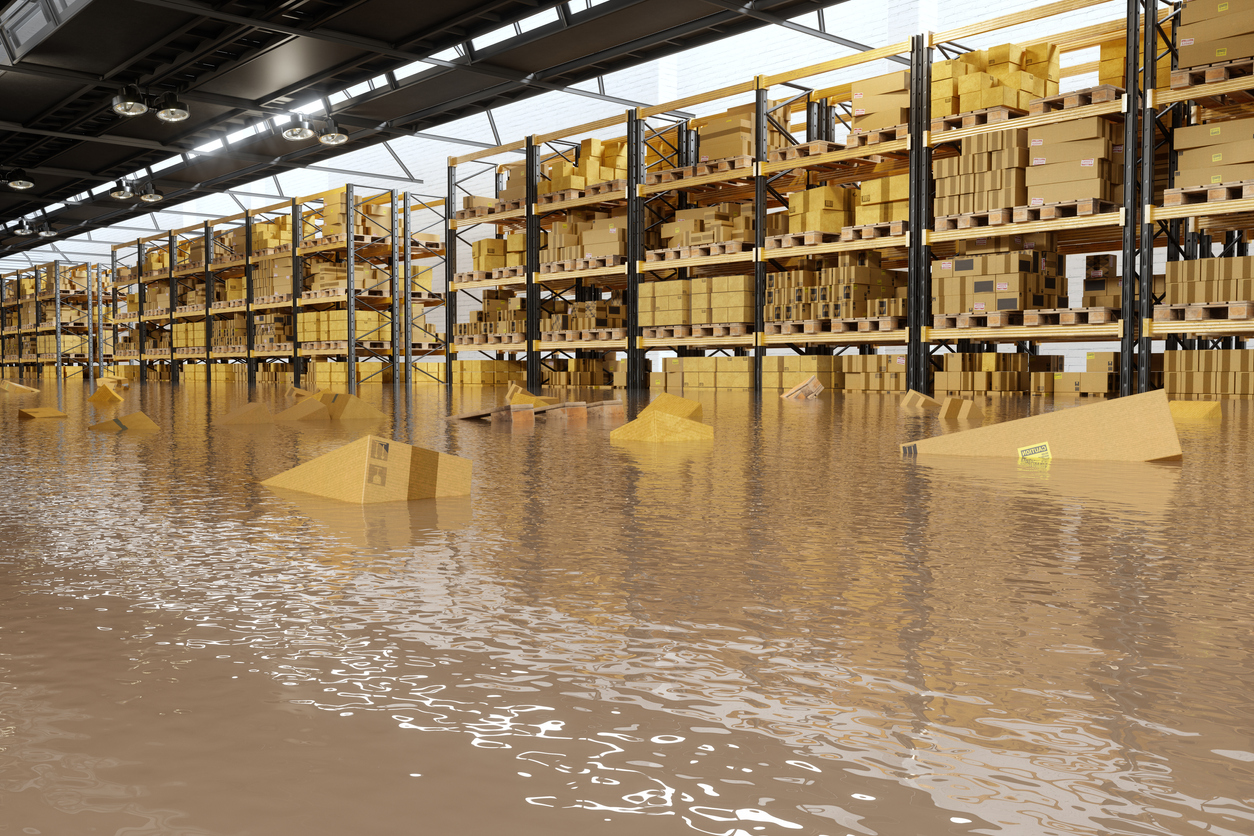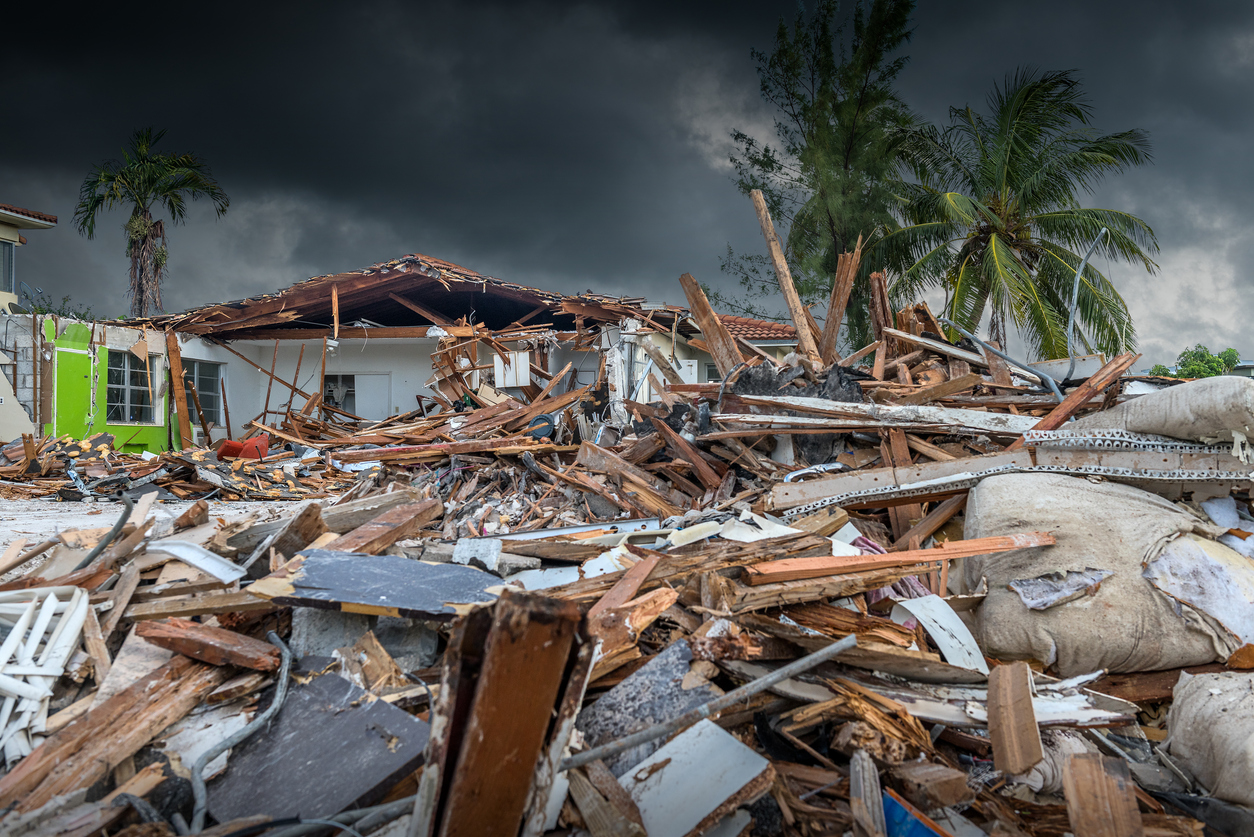Our first technical briefing introduced the Oil & Gas value chain, divided into: i) upstream; ii) midstream; and iii) downstream. Here is a recap, before we explore natural gas in more detail.
- Upstream: this involves the exploration and extraction of crude oil and natural gas to the surface;
- Midstream: as natural gas is usually trapped with crude oil under rock layers, the midstream work covers the initial processing where natural gas is separated from oil, water and other impurities. It also includes storage and transportation (via pipeline or tanker) to sites for further refining; and
- Downstream: this involves the refining of oil & gas into fuels and key desired finished products, such as gasoline, diesel, jet fuel, lubricants etc., as well as the marketing and distribution of products.
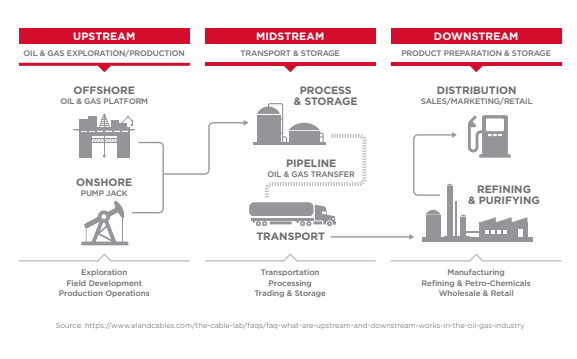
Natural Gas Formation & Extraction
The formation process for natural gas and crude oil is essentially the same, beginning millions of years ago. Intense heat and high pressure underground turned layers of decomposing plants and animals into natural gas and/or crude oil.
Natural gas is a hydrocarbon mixture consisting mainly of methane, with smaller amounts of other hydrocarbons such as ethane, propane, butane and pentane (collectively known as Natural Gas Liquids or NGLs) and non-hydrocarbon contents such as nitrogen, carbon dioxide and water vapor. In its raw state, natural gas is colourless and odourless. The rotten eggs or sulphur odour that you are familiar with is Mercaptan which is added for rapid leak detection.
After establishing a prospective reserve, a well is drilled to extract and bring natural gas to the surface. As discussed above, natural gas and oil are often found in the same reserves. Hence, a separation process is often the first midstream step.
Gas Separation Plant (Midstream Level)
Oil (or condensate) and water are separated from the gas during midstream processing. Recovered oil is usually sent to a refinery as a feedstock for further processing, whilst water extracted is treated to meet environmental standards before being disposed.
Following condensate and water removal, the natural gas stream, which usually contains significant amounts of hydrogen sulphide (H2S) and carbon dioxide (CO2), commonly referred to as sour gas, is sent to an Acid Gas Recovery Unit (“AGRU”), where the removal of these two undesired contaminants is carried out due to safety, environmental and product specifications. The acid gases which consist mainly of H2S as well as CO2 serve as a feed gas to a Sulphur Recovery Unit (“SRU”), where H2S is converted into elemental sulphur which is a saleable product used in the agrochemical industry for pesticide & fertilizer manufacturing. Tail gas is further treated at a Tail Gas Treating Unit (“TGTU”), to further enhance sulphur recovery.
In addition to the simple water separation process at the wellhead, removal of water vapor at a dehydration unit is usually required after the wet process of acid gas removal. Water vapor causes line plugging, due to the formation of hydrates and increased risk of equipment / pipeline corrosion.
After mercury removal and nitrogen rejection, Natural Gas Liquids (NGLs) are separated from the natural gas stream and further fractionated into separate valuable products, including ethane, propane, butane and other hydrocarbons. NGLs can be used as fuel and feedstock in refineries or petrochemical plants.
The extracted dry natural gas is transported to downstream plants via a network of pipelines or can be shipped in liquid form over long distances, known as Liquefied Natural Gas (LNG). Alternatively, natural gas can be transformed into gasoline or diesel or jet fuel via Gas to Liquids (GTL) process, so it is easier to transport and can be used in the petroleum industry.
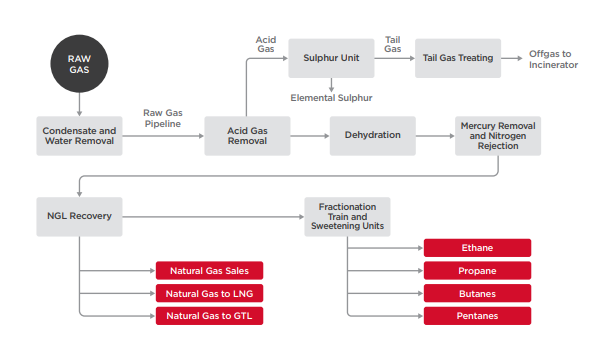
Natural Gas Usage
According to the International Energy Agency (IEA), about a quarter of global electricity is generated utilizing natural gas. Due to global efforts to reach net zero emissions, long-term usage of natural gas is uncertain, however, in the mid-term, its use will continue to grow strongly. Moreover, the IEA forecasts that in the upcoming years, the Asia Pacific region will be responsible for over half of incremental global gas consumption, due to the development of gas in China and India in place of coal.
In 2021, the United States used about 30.28 trillion cubic feet (Tcf) of natural gas, about 31.35 quadrillion British thermal units (BTU).
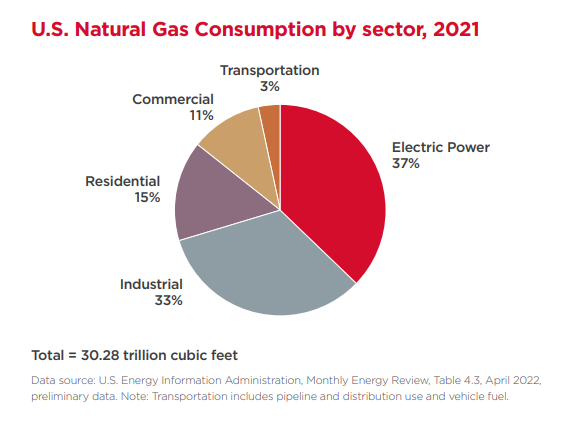
The main applications of natural gas are for heating and generating electricity, but it is used in a variety of ways throughout different sectors of the global economy.
In electric power generation, natural gas is used in gas turbines to generate electricity and to produce useful thermal output that is used in combined cycle power plants to produce additional electricity from steam turbines.
Natural gas usage in the industrial sector includes: i) fuel for process heating; ii) combined heat and power (CHP) plants (plants that produce both heat and electricity from a single heat source); iii) raw material to produce chemicals, fertilizer, and hydrogen.
In the commercial sector, natural gas is used to heat buildings and water, as well as to cook, to dry clothes, and for outdoor lighting. It is also used to operate refrigeration and cooling equipment, and in combined heat and power systems. The residential sector uses natural gas for space and water heating, and to power home appliances, such as stoves, air conditioners, outdoor lights, and clothes washers and dryers. Finally, the transportation sector uses natural gas both to fuel compressors that move natural gas through pipelines, and as compressed natural gas and liquefied natural gas that is used to fuel vehicles.
Other usages of natural gas include Liquified Natural Gas (LNG) and Gas-To-Liquids (GTL), which will be discussed in subsequent paragraphs.
Natural Gas Transportation – Liquified Natural Gas (LNG)
LNG is natural gas that has been cooled to a liquid state (liquefied), at about -260° Fahrenheit, for shipping and storage. The volume of natural gas in its liquid state is about 600 times smaller than its volume in its gaseous state in a natural gas pipeline. This liquefaction process, developed in the 19th century, makes it possible to transport natural gas to places natural gas pipelines do not reach and to use natural gas as a transportation fuel.
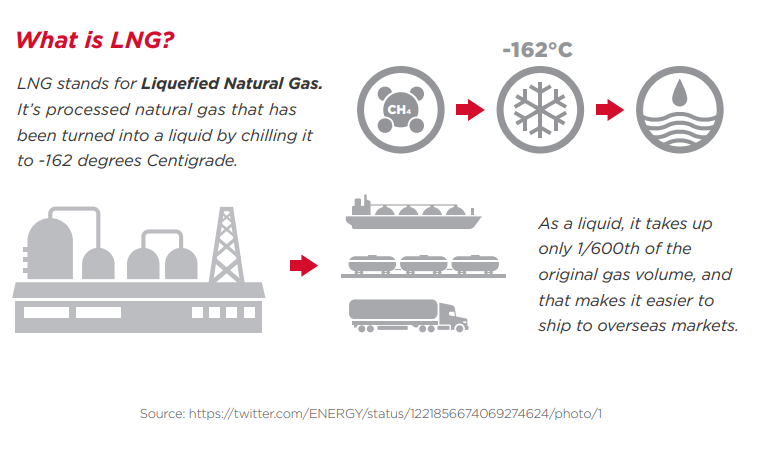
LNG increases markets for natural gas – liquefying natural gas is a way to move natural gas long distances when pipeline transport is not feasible. Markets that are too far away from producing regions to be connected directly to pipelines have access to natural gas because of LNG. Due to the low volatility of LNG and the ability to transport LNG at low pressure, compared to natural gas, the demand for LNG has significantly increased and worldwide production is also rapidly expanding to meet increased demand. In addition to the significantly reduced volume of LNG, compared to natural gas, it is typically transported at about 4 PSI vs. 200 to 1,500 PSI needed to transport natural gas.
In its compact liquid form, natural gas can be shipped in special tankers to terminals around the world. At these terminals, the LNG is returned to its gaseous state and transported by pipeline to distribution companies, industrial consumers, and power plants.
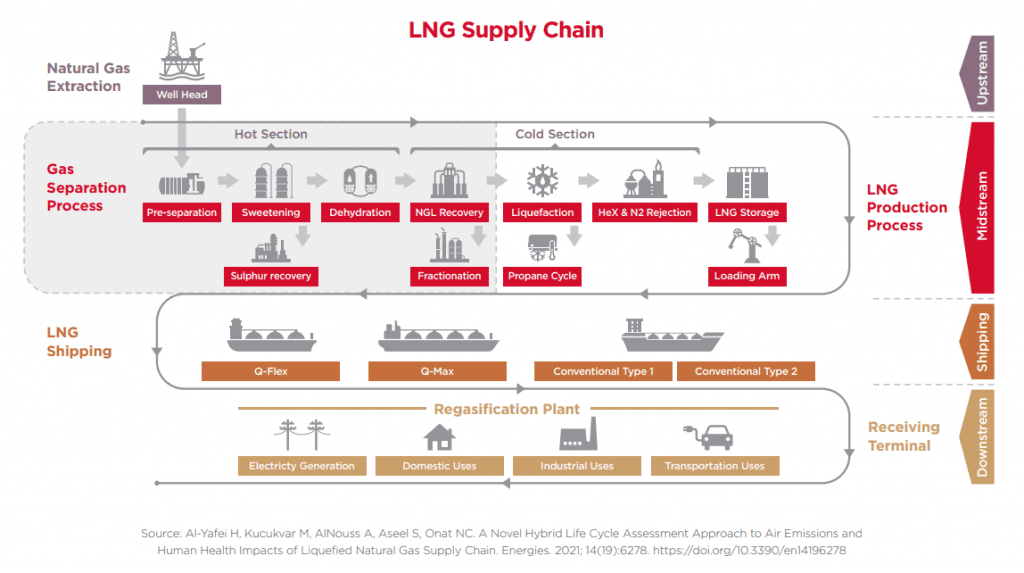
A larger portion of the cost in the LNG supply chain, approximately 70%, is incurred at the processing trains to produce LNG from natural gas and for storage and regasification back into natural gas at the receiving ports. The LNG must be regasified to be used as fuel for electricity generation / heating and other industrial applications. The following chart provides a general idea of the cost of each of the processes of LNG, from exploration to the end customer.
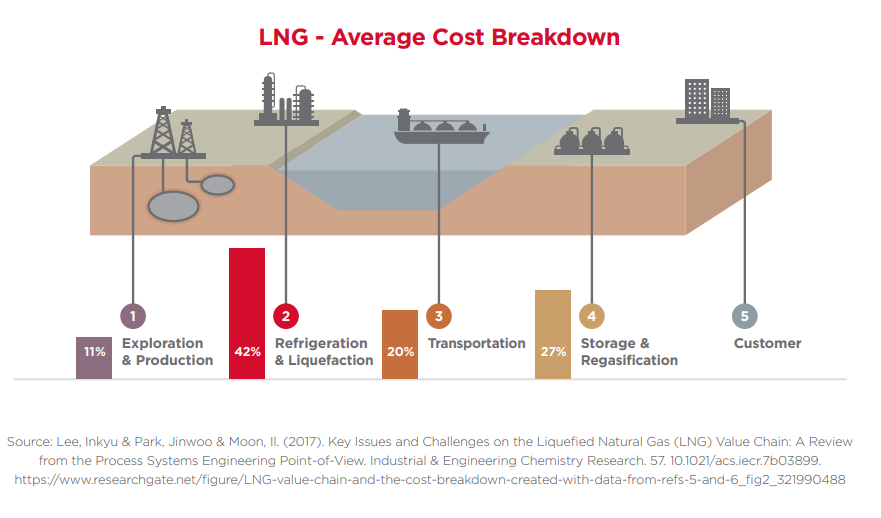
LNG Markets
As one might expect, countries with an abundant supply of natural gas, tend to be the large producers / exporters of LNG. Conversely, countries that do not have a local natural gas source nearby tend to be the larger importers of LNG.
Leading importers of LNG worldwide in 2021 were China, Japan and South Korea. China is the world’s largest LNG importer (consumption increased in the last five years from 26 mtpa[1] to 80 mtpa).
The countries that lead LNG export capacity as of July 2022 are Australia, Qatar and the USA. Nearly five years ago, USA was the 17th largest LNG exporting country, with only 3 mtpa of exports. Today, the United States plays a critical role as the world’s third largest LNG producer with 78 mtpa of production. Moreover, an additional 30 mtpa of new production is under construction, which will make the United States the largest exporting country in a few years. Russia, Qatar and other Pacific countries have significant plans to increase LNG production into the early 2030’s.
Gas-To-Liquids (GTL)
Gas-To-Liquids is a chemical process that converts natural gas (methane) to liquid fuels such as: gasoline, kerosene (jet fuel), naphtha, diesel, and paraffin. GTL high-quality liquid products contain almost none of the impurities that are found in crude oil, such as sulphur, aromatics and nitrogen. Also, GTL products can be exported for a lower cost than converting the natural gas into LNG.
The GTL process consists of three general stages. The first stage includes the generation of syngas (synthesis gas is a mixture of hydrogen, carbon dioxide, and carbon monoxide), which is manufactured from natural gas by partial oxidation, followed by removal of impurities from the syngas. The second stage consists of converting the syngas into liquid hydrocarbons using a catalyst and, during this stage, a liquid with a consistency of wax is formed. The third stage consists of cracking and isomerization, which modifies the molecular chains into products with desired properties, yielding high-quality liquids such as diesel, kerosene and lubricant oil.
The most common technique used at GTL plants is Fischer-Tropsch (F-T) synthesis. The F-T reaction combines hydrogen with carbon monoxide to form different liquid hydrocarbons, which are then processed further using various refining technologies into liquid fuels, as previously mentioned.
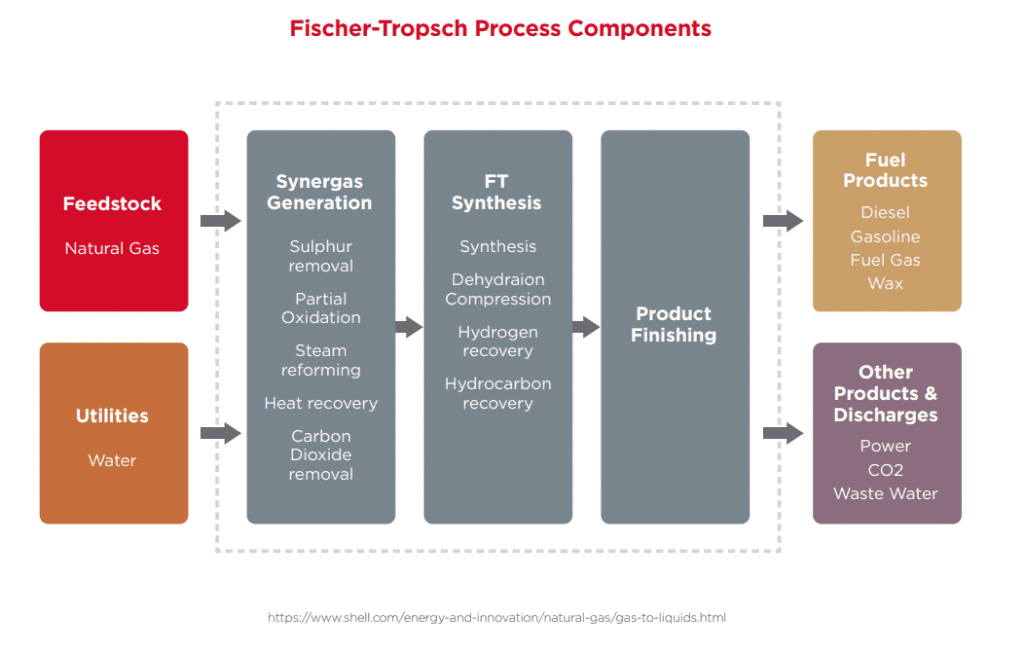
Summary
The extracted natural gas is transported to gas processing plants through a network of pipelines. All water and impurities are then removed, as these might be corrosive to process equipment and transportation pipelines or vessels downstream. The extraction of NGLs from the sweetened natural gas stream produces ethane, propane, butanes and pentanes. The purified and dry natural gas is then either: i) piped to the end-user markets; ii) liquified into LNG, to be transported under low pressure via ships to receiving terminals at further destinations; or iii) converted into more valuable GTL products, such as gasoline, kerosene (jet fuel), naphtha, diesel, and paraffin.
We hope that this article has provided a useful introduction to the world of natural gas. Look out for future case studies in which we will explore some of these processes in more depth.
The statements or comments contained within this article are based on the author’s own knowledge and experience and do not necessarily represent those of the firm, other partners, our clients, or other business partners.






